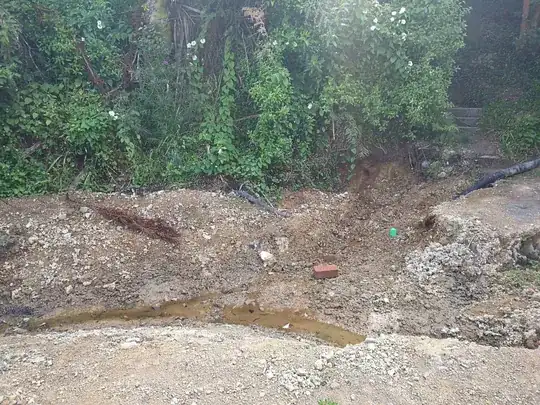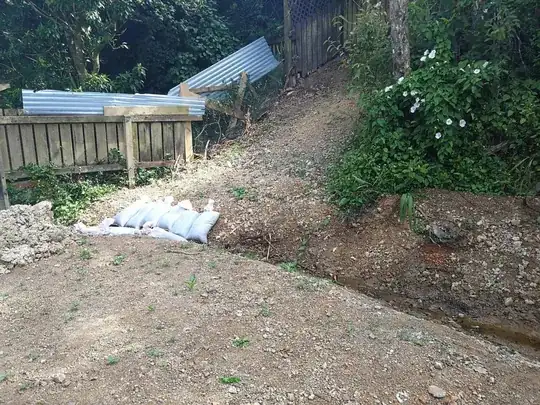I think you are flirting with disaster building your home right next to or on top of this 'spring'. This is a major drainage vein for your neighborhood. Water and concrete, water and wood, water and enclosed, insulated spaces do not go together.
Is there nowhere else to move your home farther away from this 'creek'? Make no mistake, this is most certainly doable but you need to do everything possible to protect your home from water, moisture, moisture loving insects, bacteria, fungus and mold.
Frank Lloyd Wright build a famous home over a larger creek than yours. Gorgeous.
I'd need to know where you are on the map and the larger hydrology of your land. Floods? Other rivers? Where does this water run to in the bigger picture? Who lives upstream? Any industries? If this water is partly over ground and party under ground and your water table is this shallow it will be full of all kinds of chemicals you and goldfish would not want.
You will not want to damn this stream. You could divert the water to a pond but do not think about damning it. That is an awful lot of water and again, there are laws in this country where anyone caught changing anything of a riparian system would be in big big trouble. Even within defined buffer zones...!
We don't need laws to tell us that messing with aquifers, rivers, streams, intermittent creeks is a huge responsibility. I would definitely get water tests. Find out who lives up stream, what is happening miles above your property that is obviously affecting your property.
To make a pond, find a way to divert the water (I guess it is okay in your country and knowing a little about New Zealand, your country is very careful and concerned about the environment, knows a thing or two as well). You might entertain a filtration system after the first water tests to filter the water going into your pond.
Yes, pond liner, two layers the best you can find. You want control of the water input using sensors that when the pond gets to a certain height level will start the fill. Clean out all rocks and sticks below the pond liner. No sharp edges. You do not want any holes even though you have lots of water. Black pond liner the best quality. There are formed 'ponds' but depending on the type of fish might not be deep enough to survive the winter as well as the predators...
This pond should be completely separate from that stream. If you want fish of any kind. You more than likely have raccoons? Cranes? They will find and they will decimate any and all fish unless you create a deep enough pond, equip with plant life (water lilies in their own sunken pots/soil) and definitely you need to make stone shelves that stick out over the water by 1 1/2 feet.
I can help with this down the road. I am dying to see a rough plan of your property.
If you want to build a home there, that is you number one priority. I'd find a very savvy engineer and/or Landscape Architect (not designer). Think about building your home on stilts. You and that engineer need to know the history of this hydrology system. The pond needs to be included into some form of master plan that includes the home, outbuildings, access, your neighbors and your neighbors upstream. Do you have home plans?
Do you have professional help? An Architect? Engineer? Would I love to be able to zip over to help...my goodness. Do you know an Elizabeth that spends most of the year over here?
Why do you have sandbags? How much water is able to go through there? Your property looks like an exciting challenge with so many possibilities. Love the topography, the lushness of old ecosystem, the water...to die for. Almost too good to be true. Where is the home you live in now? On the same property? Or is this a new adventure?

